#rue saint antoine
Text
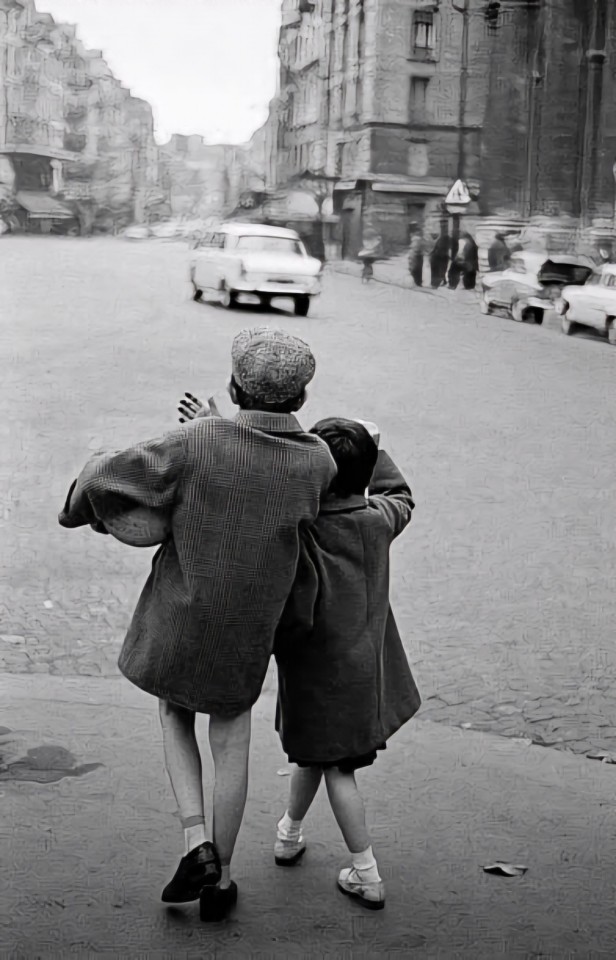
Bon jour ☕️ 🥐 🍊 bon Week-end à tous
Deux gamins rue St Antoine🗼Paris 1961
Photo de Édouard Boubat
#photooftheday#photography#black and white#vintage#édouard boubat#paris#enfants#rue saint antoine#bonjour#bon week-end#fidjie fidjie
78 notes
·
View notes
Text

1986 Paris, rue du Faubourg Saint-Antoine
#1986#Paris#Rue du Faubourg Saint-Antoine#photography#original photographers#blackandwhite#streetphotography#analog photography#1980s#film photography#vintage#pierre wayser
15 notes
·
View notes
Text

#paris#france#streets#people#darkness#light#rain#pluie#woman#femme#rue du faubourg saint antoine#75012#bastille
10 notes
·
View notes
Text
Janet Werner - Spiders and Snakes / Galerie Bradley Ertaskiran (ca)
Janet Werner / Feathers and fold
Spiders and Snakes
Jusqu’au 4 mai 2024
Bradley Ertaskiran a le plaisir de présenter Spiders and Snakes, une exposition solo de nouvelles peintures de Janet Werner. Ce corpus d’œuvres poursuit les explorations uniques et hybrides de l’artiste dans le genre du portrait, dans lesquelles elle crée ses propres règles en réunissant des représentations concurrentes de…
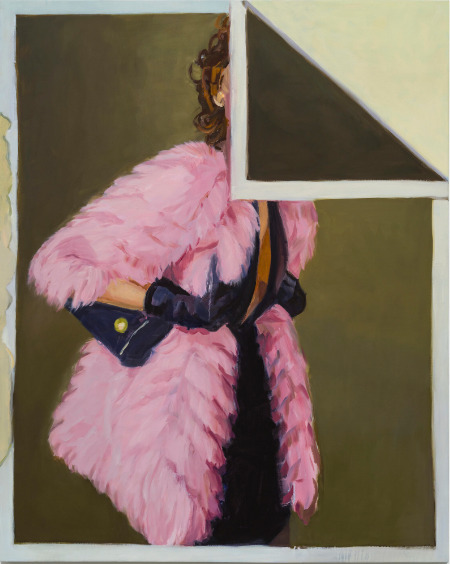
View On WordPress
#3550 rue Saint-Antoine Ouest#Association des galeries d&039;art contemporain (AGAC)#Galerie Bradley Ertaskiran#Janet Werner#Janet Werner - Spiders and Snakes / Galerie Bradley Ertaskiran (ca)#Montréal (Québec)#Paumé arts et littératures#Plural Foire d&039;art contemporain - Plural Contemporary Art Fair / Grand Quai du Port de Montréal (CA)#Spiders and Snakes
0 notes
Text
Rue des artistes : Exposition Henri Antoine Vial (1944 - 1996) du 4 au 20 novembre 2022 - Saint Galmier
Rue des artistes : Exposition Henri Antoine Vial (1944 – 1996) du 4 au 20 novembre 2022 – Saint Galmier
GALERIE DU CAVEAU DES ARTS – SAINT GALMIER
Les ayants droit de l’artiste et l’association Rue des Artistes
ont le plaisir de vous inviter au vernissage de l’exposition
Henri Antoine Vial (1944 – 1996)
samedi 5 novembre 2022 de 14h à 19h
L’exposition durera du 4 novembre au 20 novembre 2022
Entrée libre et gratuite
Renseignements
Rue des ArtistesAssociation loi 190129 rue…
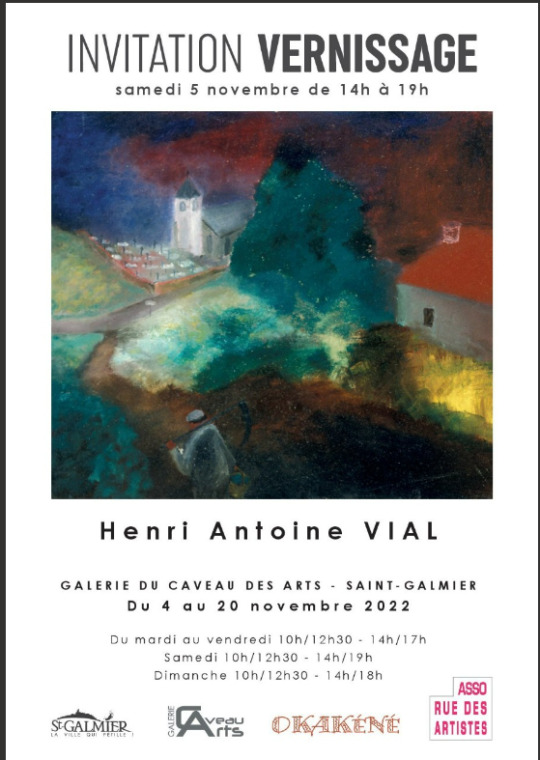
View On WordPress
0 notes
Text
Les Mis Canon-era Paris Photographs: Jean Valjean and Cosette’s route to escape Javert, in Pictures!

Jean Valjean's escape through Paris is Victor Hugo's way of mourning the Paris he knew from before his exile, the Paris before the modern renovations.
Hugo wrote Les Mis from exile in Guernsey, at the same time as Paris was undergoing a series of massive renovations. The "Old City" of medieval Paris that Hugo loved was being replaced by the “New City" of Baron Haussman. The dark medieval labyrinth lit by oil lamps was being replaced by modern wide streets and standardized architecture lit by gas lamps. Victor Hugo is nostalgic for the Paris he remembers before his exile-- so Jean Valjean is able to escape Javert using things unique to the Old City. He escapes through a labyrinth of tiny medieval streets in a neighborhood Hugo claims was destroyed during the renovations; he climbs over the convent wall using the rope from an oil lamp, the very oil lamps that were being replaced by the more modern gas lanterns. The dark maze hides him from police surveillance in a way modern streets cannot.
A man named Charles Marville photographed Paris shortly before many (though not all) of the renovations occurred. In this post I'll go through all the different streets mentioned in the Valjean-Javert Paris chase chapters, and provide Marville's photographs whenever they the image has been labeled with the name of the street. Note that there may be some inaccuracies. Some street names changed over time.
Here is a map of what the chase looks like, taken from the book "Paris in the Times of Victor Hugo."
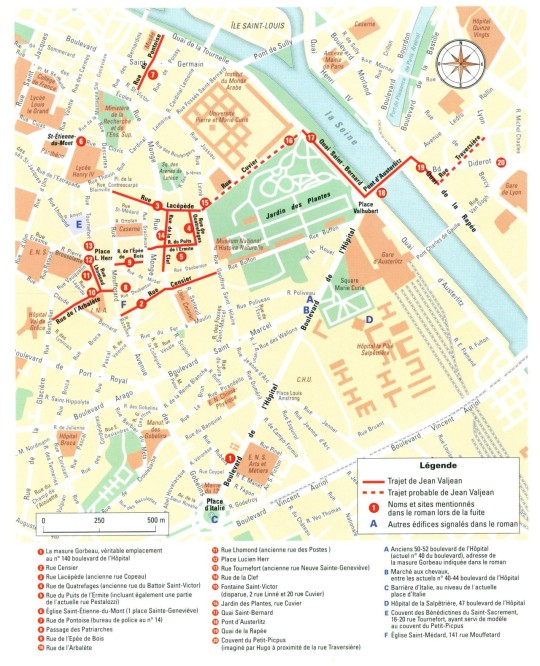
A quick overview: Jean Valjean starts in a slummy half-built suburban area. This area is highly associated with the King; the royal Jardin des Plantes is nearby, and King Louis XVIII often rides by in his carriage during the afternoons. After travelling down a bunch of streets, "zigzagging" back and forth, Jean Valjean decides to cross the Seine over the Bridge of Austerlitz (a bridge named after one of Napoleon's victories.) Then he reaches the areas of the city near the Faubourg Saint Antoine that are more associated with working class rebellion. From there he enters a dark isolated half-built medieval neighborhood near marshes and timberyards, with narrow mazey alleyways, that Hugo mostly made up. Hugo pretends this medieval neighborhood used to exist, but was destroyed like many others during the recent renovations. Now that we've gotten the overview out of the way, let's go more specific!
The chase starts out in "the old quarter of the Marche aux Chevaux." At the time, this was a less inhabited and poorer area of Paris; it's described as basically a slum. Here are some of Marville's photographs :

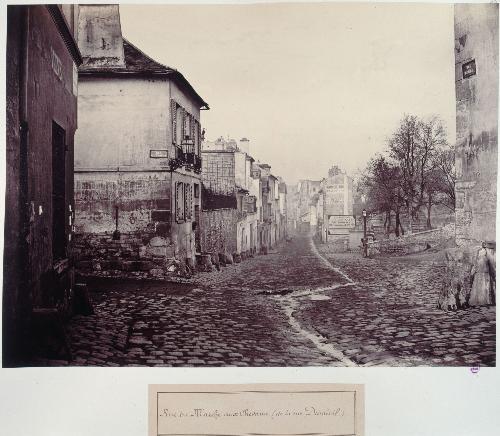
Then we're told "Jean Valjean described many and varied labyrinths in the Mouffetard quarter, which was already asleep, as though the discipline of the Middle Ages and the yoke of the curfew still existed. He combined in various manners, with cunning strategy, the Rue Censier:"
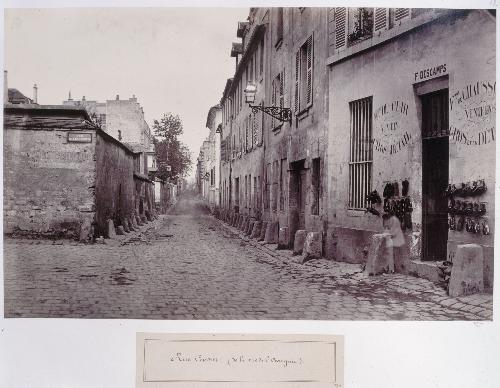
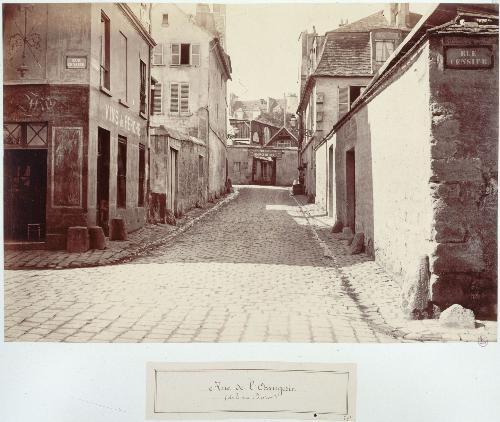


"and the Rue Copeau," (according to the map I linked earlier, the Rue Copeau is now the Rue Lacepede. Here is Marville's pic:)

"the Rue du Battoir-Saint-Victor and the Rue du Puits l’Ermite. There are lodging houses in this locality, but he did not even enter one, finding nothing which suited him. He had no doubt that if any one had chanced to be upon his track, they would have lost it."
"As eleven o’clock struck from Saint-Étienne-du-Mont:" (note: this refers to the church of Saint-Etienne)

"he was traversing the Rue de Pontoise, in front of the office of the commissary of police, situated at No. 14." (Jean Valjean sees Javert and the police following him on this street, because they're visible in the light of the lantern from the police station.)
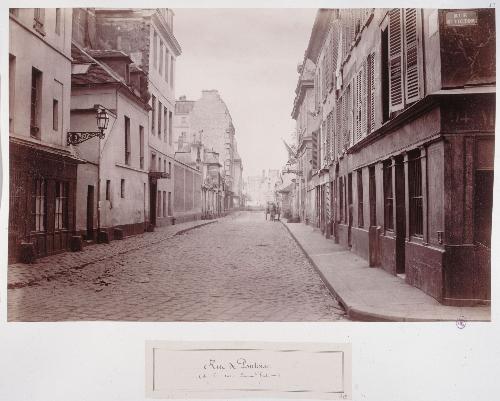
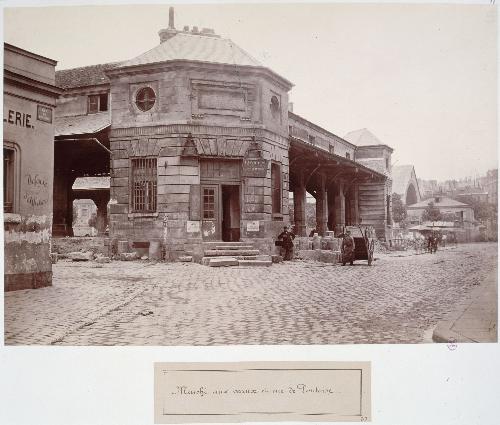
"He took a circuit, turned into the Passage des Patriarches, which was closed on account of the hour,"
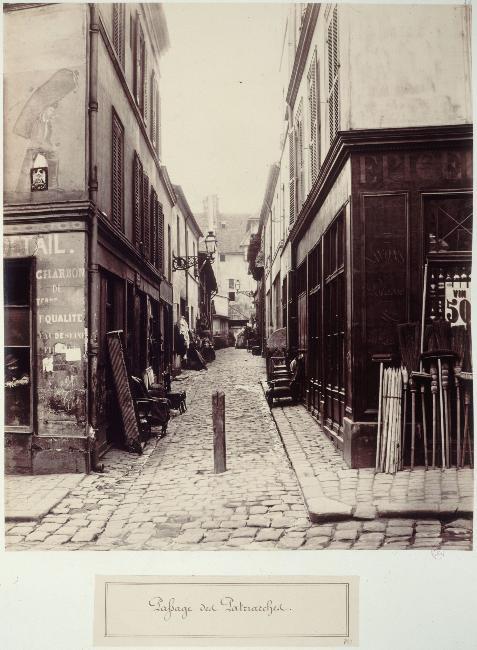
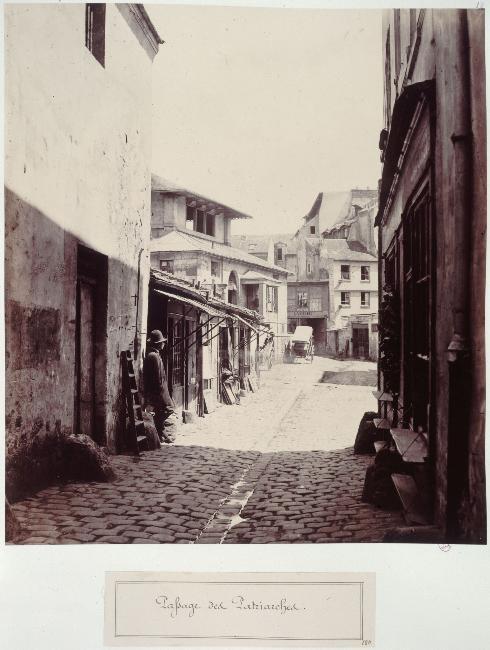
"strode along the Rue de l’Épée-de-Bois

and the Rue de l’Arbalète, and plunged into the Rue des Postes."




"At that time there was a square formed by the intersection of streets, where the College Rollin stands to-day, and where the Rue Neuve-Sainte-Geneviève turns off." (Note: these streets are labeled Montagne-Sainte-Geneviève, but not Neuve-Sainte-Geneviève, so they may be different streets! But I'm putting them here anyway.)
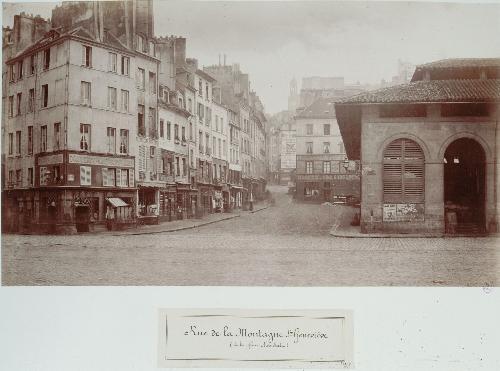


"It is understood, of course, that the Rue Neuve-Sainte-Geneviève is an old street, and that a posting-chaise does not pass through the Rue des Postes once in ten years. In the thirteenth century this Rue des Postes was inhabited by potters, and its real name is Rue des Pots." (Annotation: Hugo's bein silly and making little puns. He's snarkily pointing out the "new saint-genevieve street" is old, and the post street rarely has post-chaises/carriages go through it.)
(Jean Valjean hides in the shadows and watches to see who shows up in this big square intersection of streets. In the moonlight, he recognizes Javert.)
"He slipped from under the gate where he had concealed himself, and went down the Rue des Postes (which I shared a picture of previously), towards the region of the Jardin des Plantes." (Note: the Jardin des Plantes is a royal garden. Here is a modern photo from Wikipedia.)

"He left behind him the Rue de la Clef,

"then the Fountain Saint-Victor, skirted the Jardin des Plantes by the lower streets, and reached the quay. There he turned round. The quay was deserted. The streets were deserted. There was no one behind him. He drew a long breath.
He gained the Pont d’Austerlitz."
(The Pont d'Austerlitz, named after Napoleon's victory at the battle of Austerlitz, is a very famous bridge. Marville has no photographs but here's an 1830 engraving:)

"The bridge once crossed, he perceived some timber-yards on his right. He directed his course thither. In order to reach them, it was necessary to risk himself in a tolerably large unsheltered and illuminated space. He did not hesitate. Those who were on his track had evidently lost the scent, and Jean Valjean believed himself to be out of danger. Hunted, yes; followed, no."
Here's the quai by the pont-au-change-- a different quai, but gives you an idea of what the areas around the Seine often looked like.
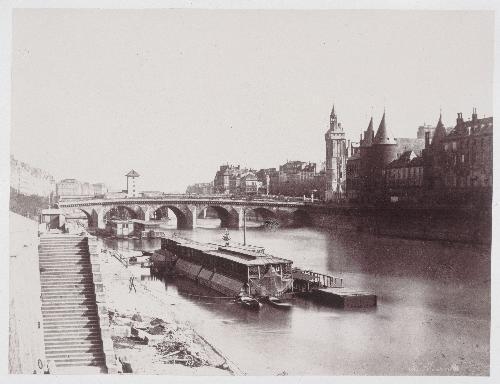
(Then Jean Valjean sees Javert and the other police on the Bridge of Austerlitz, following him. He hurries towards the darker alleys of the city.)
"A little street, the Rue du Chemin-Vert-Saint-Antoine, opened out between two timber-yards enclosed in walls. This street was dark and narrow and seemed made expressly for him."
Here's an abandoned timber-yard-ish looking picture:

But Marville has no photographs of this street. I'd have to double check, but iirc this is the part where Hugo starts to 'make up' more street layouts. I wouldn't be surprised if this street really WAS made expressly for him (meaning Hugo made it up.)
"The point of Paris where Jean Valjean found himself, situated between the Faubourg Saint-Antoine and la Râpée, is one of those which recent improvements have transformed from top to bottom,—resulting in disfigurement according to some, and in a transfiguration according to others. The market-gardens, the timber-yards, and the old buildings have been effaced. To-day, there are brand-new, wide streets, arenas, circuses, hippodromes, railway stations, and a prison, Mazas, there; progress, as the reader sees, with its antidote."
(Here Hugo talks about the Haussman renovations directly, claiming that if his street layouts are "inaccurate" it's because these are some of the Old Medieval Streets that were razed during Paris's recent renovations. He goes on for a while comparing Petit-Picpus to various other areas that were changed during the renovations.)
"Le Petit-Picpus, which, moreover, hardly ever had any existence, and never was more than the outline of a quarter, had nearly the monkish aspect of a Spanish town. The roads were not much paved; the streets were not much built up. (....) Such was this quarter in the last century. The Revolution snubbed it soundly. The republican government demolished and cut through it. Rubbish shoots were established there. Thirty years ago, this quarter was disappearing under the erasing process of new buildings. To-day, it has been utterly blotted out."
The Petit-Picpus, of which no existing plan has preserved a trace, is indicated with sufficient clearness in the plan of 1727, published at Paris by Denis Thierry, Rue Saint-Jacques, opposite the Rue du Plâtre;

and at Lyons, by Jean Girin, Rue Mercière, at the sign of Prudence.
Petit-Picpus had, as we have just mentioned, a Y of streets, formed by the Rue du Chemin-Vert-Saint-Antoine, which spread out in two branches, taking on the left the name of Little Picpus Street, and on the right the name of the Rue Polonceau. The two limbs of the Y were connected at the apex as by a bar; this bar was called Rue Droit-Mur.
The Rue Polonceau ended there; Rue Petit-Picpus passed on, and ascended towards the Lenoir market. A person coming from the Seine reached the extremity of the Rue Polonceau, and had on his right the Rue Droit-Mur, turning abruptly at a right angle, in front of him the wall of that street, and on his right a truncated prolongation of the Rue Droit-Mur, which had no issue and was called the Cul-de-Sac Genrot."
Here is @everyonewasabird's attempt to puzzle this out:

It was here that Jean Valjean stood."
Then Jean Valjean escapes by pulling down an old oil lantern, strung up by ropes. Hugo notes that this would have been "impossible if the streets were lit with gas, the way they would be after the renovations. This picture shows an old oil lamp strung up by ropes:

Finally, Jean Valjean climbs over the wall into the Petit-Picpus convent. This convent is fictional. Hugo pretends it used to exists but is no longer around-- another relic of the early 19th century that has been lost over time.
TLDR:
Jean Valjean's escape through Paris is Hugo way of mourning the Paris he knew from before his exile, the Paris before the modern renovations. To quote Volume 2 Book 5 Chapter 1:
The author of this book, who regrets the necessity of mentioning himself, has been absent from Paris for many years. Paris has been transformed since he quitted it. A new city has arisen, which is, after a fashion, unknown to him. There is no need for him to say that he loves Paris: Paris is his mind’s natal city. In consequence of demolitions and reconstructions, the Paris of his youth, that Paris which he bore away religiously in his memory, is now a Paris of days gone by. He must be permitted to speak of that Paris as though it still existed. It is possible that when the author conducts his readers to a spot and says, “In such a street there stands such and such a house,” neither street nor house will any longer exist in that locality. Readers may verify the facts if they care to take the trouble. For his own part, he is unacquainted with the new Paris, and he writes with the old Paris before his eyes in an illusion which is precious to him. It is a delight to him to dream that there still lingers behind him something of that which he beheld when he was in his own country, and that all has not vanished. So long as you go and come in your native land, you imagine that those streets are a matter of indifference to you; that those windows, those roofs, and those doors are nothing to you; that those walls are strangers to you; that those trees are merely the first encountered haphazard; that those houses, which you do not enter, are useless to you; that the pavements which you tread are merely stones. Later on, when you are no longer there, you perceive that the streets are dear to you; that you miss those roofs, those doors; and that those walls are necessary to you, those trees are well beloved by you; that you entered those houses which you never entered, every day, and that you have left a part of your heart, of your blood, of your soul, in those pavements. All those places which you no longer behold, which you may never behold again, perchance, and whose memory you have cherished, take on a melancholy charm, recur to your mind with the melancholy of an apparition, make the holy land visible to you, and are, so to speak, the very form of France, and you love them; and you call them up as they are, as they were, and you persist in this, and you will submit to no change: for you are attached to the figure of your fatherland as to the face of your mother.
159 notes
·
View notes
Text
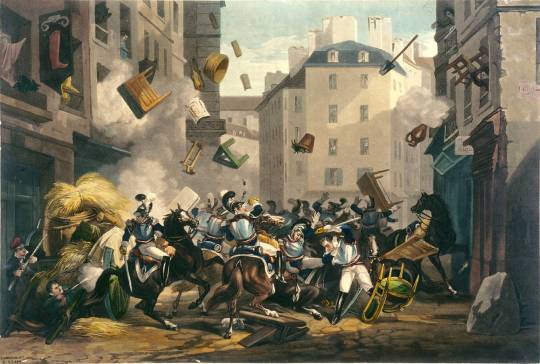

France; combat dans la rue saint-antoine 28 juillet 1830 / Paris 2023
281 notes
·
View notes
Text
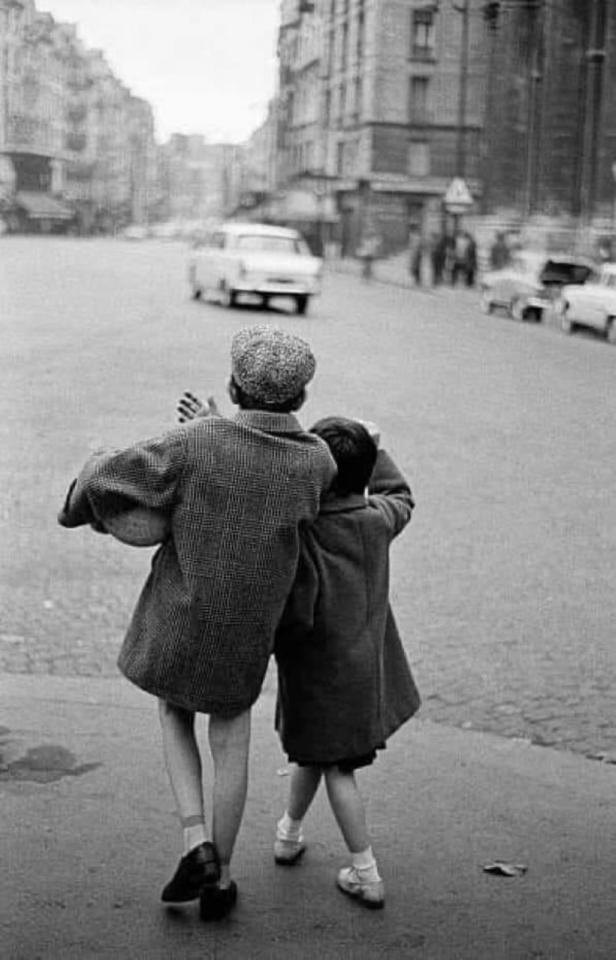
Edouard Boubat. Two children Rue Saint - Antoine, Paris, 1961.
85 notes
·
View notes
Text
Pauline Léon timeline
A timeline over the 70 year old life of Pauline Leclerc née Léon, based primarily on the article Pauline Léon, une républicaine révolutionnaire (2006) by Claude Guillon.
-
19 October 1767 — Mathurine Téholan and Pierre Paul Léon are married in the parish of Saint-Severin in Paris. Pierre Paul runs a small chocolate business on 356 rue de Grenelle. The couple settles on rue du Basq.
28 September 1768 — birth of Anne Pauline Léon, the couple’s first child. They later have four more children — Antoine Paul Louis (1772-1835), Marie Reine Antoinette, (1778), François Paul Mathurin (1779) as well as a child who’s sex and year of birth remains unknown. Pauline later describes her father as: ”a philosopher” and adds: ”If his lack of fortune did not allow him to give us a very brilliant education, at least he left us with no prejudices.”
1784 — death of Pierre Paul Léon. Pauline, aged sixteen, now starts helping her mother with keeping the chocolate business running in order to provide for the family.
14 July 1789 — Fall of the Bastille. Pauline claims to upon this event have felt ”the liveliest enthusiam, and although a woman I did not remain idle; I was seen from morning to evening animating the citizens against the artisans of tyranny, urging them to despise and brave aristocrats, barricading streets, and inciting the cowardly to leave their homes to come to the aid of the fatherland in danger.”
February 1791 — Pauline is introduced to several popular societies in Paris. She herself claims she would frequent the Cordelier Club up until 1794 (though there doesn’t seem to exist any trace of her in the debates held there), the Fraternal Society of Patriots of Both Sexes (where again, we have few documents that mention any direct activity from her part), as well as the section of Mucius Scaevola. The same month, Pauline defenestrates a bust of Lafayette “at Fréron’s”. It seems unlikey for this attack to have been aimed at the journalist Stanislas Fréron, who frequently denounced Lafayette in his l’Orateur du Peuple, but rather his mother Anne Françoise Fréron, who handled the publishing of the royalist paper L’Ami du Roi.
21 June 1791 — Pauline, her mother and their neighbor Constance Évrard are near the Palais Royal loudly protesting the king’s ”infamous treason” (his flight) when they, according to her, are ”almost assassinated by Lafayette’s mouchards” and are saved by other sans-culottes who manage to snatch them ”from the hands of these monsters” (National guardsmen)
17 July 1791 — Pauline takes part in the demonstration on the Champ-de-Mars. On the way home, she uses her fists to defend a friend against the family of a national guard. This last incident is witnessed by Constance Evrard, another sans-culotte woman and friend of Pauline, who reports it during an interrogation. This is the first conserved trace of any militant activities from Pauline.
Late February 1792 — l’Adresse individuelle à l’Assemblée nationale par des citoyennes de la capitale, a petition regarding women’s right to bear arms, is penned down. It was most likely written by Pauline herself, seeing as the first signature on the bottom of the handwritten version kept in the National Archives, as well as the only one appearing in the version printed by order of the Assembly, is “fille Léon.” After Pauline’s name about 310 more follow, including that of her mother and many other daughter-mother couples. The petition is first read out before the Society of Patriots of Both Sexes, which, under the presidency of Tallien, orders its printing and distribution.
March 9 1792 — the Patriotic Society of the Luxembourg section sends a delegation to the Fraternal Society of Patriots of Both Sexes to request affiliation. The latter club grants the request and appoints five auditors to attend the former’s next meeting, among which are three women: Pauline Léon, Constance Evrard and Marie-Charlotte Hardon. Pauline will actively participate in the recruitment of members for the Patriotic Society, personally presenting or supporting at least seven candidates between October 1792 and September 1793
June 1792 — Pauline, along with many other men and women, signs Pétition individuelle au corps législatif pour lui demander la punition de tous les conspirateurs that calls for ”a quick vengeance” against monarchist ministers.
10 August 1792 — Pauline takes part in the Insurrection of August 10. She describes her activities in the following way: "On August 10, 1792, after spending part of the night in the Fontaine-de-Grenelle section, I joined the next day, armed with a pike, the ranks of the citizens of this section to go and fight the tyrant and his satellites. It was only at the request of almost all the patriots that I consented to give up my weapon to a sans-culotte; I gave it to him, however, only on the condition that he would use it well.”
December 1792 — Pauline, together with 3 other women and 88 men, signs the Adresse au peuple par la Société patriotique de la section du Luxembourg which demands the death of the king and pronounces threats against eventual monarchist deputies.
2 February 1793 — During a session at the Fraternal Society of Patriots of Both Sexes, Pauline is welcomed as mandated by the Defenders of the Republic of the 84 departments. At the same session, Pauline’s future husband Théophile Leclerc (1771-1820) is charged with writing a petition against commodity money. This is the first known meeting between the two.
3 February 1793 — during the session at The Fraternal Society of Patriots of Both Sexes, ”Citoyenne Léon” takes the floor to continue a denounciation against Dumouriez that Hébert has just made. Le Créole patriote reports that ”she thinks, like him, that [Dumouriez] is nothing more than an intrigant; she accuses him of several things, notably the persecution he inflicted on two patriotic battalions unjustly accused by him.”
10 February 1793 — Le Créole patriote reports the following regarding the session at The Fraternal Society of Patriots of Both Sexes:
Citoyenne Léon informs of an important denunciation made to the Commune and to the society of defenders of the republic, one and indivisible of the 84 departments. This denunciation, signed, states that on the 6th of the month a dinner was held at the house of Garat, minister of justice, provisionally exercising the functions of minister of interior, where Brissot, Barbaroux, Louvet and other noirs, composing the great and famous right side of the National Convention; plus, Bournonville, new minister of war. She calls on the society to monitor the latter, and asks that two of its members be sent to that of the Jacobins to communicate to them this fact, to which the most serious attention must be paid. Boussard makes the motion that the president be instructed to write to Bournonville, so that he can give the company explanations on this subject. These three proposals are adopted.
At the Jacobin Club the same day, ”a citoyenne,” in the name of the Fraternal Society of Patriots of Both Sexes, makes the following intervention: ”Citizens, I denounce to you Garat, minister of justice, who last Wednesday had thirty people to dinner, among which were Brissot, Barbaroux, Louvet and Beurnonville. The patriots do not have entry to this minister, and Brissot comes and goes there all the time.” It is very likely this speaker was Pauline.
17 February 1793 — Le Créole patriote reports that, during the session at The Fraternal Society of Patriots of Both Sexes, ”citoyenne Léon reads a denunciation from Citizen Godchaux against General Félix Wemphen. Several members believe that this denunciation is well founded, and urge the society to tear off the mask from all the intriguers.”
10 May 1793 — Pauline is a co-founder of the Society of Revolutionary and Republican Women (Société des Républicaines révolutionnaires or Société des citoyennes républicaines révolutionnaires de Paris), a club which only admits women as members and holds its meetings at the libary of the Jacobins, rue Saint-Honoré. Claire Lacombe, who often gets mentioned as another co-founder, actually doesn’t have her first attested appearance as a member of the society until June 26. Already on the May 12, the club presents itself at the Jacobins, proposing to arm patriotic women between ages 18 and 50 in order to organize them against the Vendée. A week later, May 19, a delegation made up of members from both the Cordeliers and Revolutionary and Republican Women present themselves before the Jacobins yet again, asking for the arrest of all suspect people, the establishment of both revolutionary tribunals in all departments and a revolutionary sans-culotte army in every town, an act of accusation against the girondins, the extermination of “the stockbrokers, the hoarders and the selfish merchants” who are responsible for a conspiracy attempting to starve the people, that the revolutionary army of Paris be increased to 40,000 men, that land be distributed to the soldiers, as well as the send forth of the petition to the Convention. Though Pauline’s presence can be supposed for both of these occasions, we don’t have any hard evidence for it.
2 June 1793 — Pauline leads a delegation from the Society of Revolutionary and Republican Women wishing to be admitted to the Convention, carrying a request in her own handwriting. They are however quickly forgotten in the tumult caused by the Insurrection of May 31, which this day ends with 22 girondins being put under house arrest. During this same insurrection, several Revolutionary and Republican Women are arrested, and Pauline, as president of the Society, signs a warrant by which they demand the liberation of one of them, detained for having threatened three men with a knife.
June 1793 — Pauline is the author of a denounciation against the grocer Le Doux, rue du Sépulcre, accused of “bad comments,” mainly consisting of complains about the looting. We don’t know if the denounciation had any consequences.
9 July 1793 — Le Réglement de la Société des citoyennes républicaines révolutionnaires de Paris is published. The document is signed by president Rousaud and four secretaires: Potheau, Monier, Dubreuil och Pauline Léon.
July 10 1793 — Pauline goes to the Jacobin club, where she, ”in the name of the Revolutionary and Republican Women, presents a petition demanding the exclusion of nobles from all employments.”
July 20 1793 — A Délibération de la Société des Républicaines révolutionnaires, relative à l’érection d’un obélisque à la mémoire de Marat, sur la place du Carrousel, is signed by Pauline. The text is read at the Jacobins on July 26, by a deputation from the Society of Revolutionary and Republican Women.
July 31 1793 — Réglement de la Société des citoyennes républicaines révolutionnaires de Paris is published. The document is signed by the president, Rousaud, and four secretaries: Potheau, Monier, Dubreuil and Pauline Léon.
15 August 1793 — At the Jacobin club, ”citoyenne Léon, at the head of a deputation from the Society of Revolutionary and Republican Women, comes to request assimilation and correspondence for said Society. She also asks that the Jacobins contribute to the costs of the obelisk erected in Marat’s honor.”
30 October 1793 — Jean Pierre André Amar, member of the Committee of General Security, announces the dissolution of the Society of Revolutionary Women to the National Convention.
12 November 1793 — the marriage contract between Pauline Léon and Théophile Leclerc is signed. Through it, we see that the husband brings property valued at 300 livres, while the wife holds 1000 livres consisting of both money and effects. Pauline was in other words richer than Leclerc. She declares to after her marriage have returned to the chocolate making business and ”devoted myself entirely to the care of my household and given the example of conjugal love and the domestic virtues which are the basis of love of the homeland.”
March 17 1794 — Pauline joins Leclerc at La Fère (Aisne), where the latter is mobilizing.
April 3 1794 — the Leclerc couple are arrested on orders given by the Committee of General Security. They are taken to Paris and locked up in the Luxembourg prison three days later.
4 July 1794 — At the Luxembourg prison, Pauline either writes or dictates Précis de la conduite révolutionnaire de dame Pauline Léon, femme Leclerc, which is adressed to the Committee of General Security. It is from this document we learn almost all the details regarding her militant activities and private life. Unfortunately, I’ve not been able to find it published in full.
5 August 1794 — Pauline writes to ”sensible Tallien” and pleads for the cause of ”800 imprisoned people.” One day later she adresses herself to to ”the representatives” and asks them to at least consider a prompt examination of their case. Pauline claims that Leclerc and Pierre-François Réal were imprisoned for having "collected evidence against the accomplices of the tyrant Robespierre who were to have their throats slit." The following day, the two men are brought before the Committee of General Security. Réal is immediately set free, Pauline and Théophile joins him on August 22.
22 July 1804 — Pauline writes the following letter (cited in full within the article Un sans-culotte parisien en l’an XII: François Léon, frère de Pauline Léon (1982) by Michael David Sibalis) to Réal, by now one of those in charge of the general police, asking for the liberation of her younger brother François Paul Mathurin, imprisoned since three and a half months back for having written and published leaflets critical of Napoleon. Through the letter, we learn about some things that have happened in her life during the ten years since the last trace of her:
4 Thermidor [year 12]
Monsieur,
A month ago I presented a petition to the Grand Judge; at the same time I had the honor of writing to you, to request the release of my brother, named François Léon, imprisoned in the Bicêtre for a bad verse; I would ask for your indulgence, today I appeal to your justice; four months of such harsh detention had to atone for his fault; moreover his friend guilty of the same extravagance, since of two verses, one wrote the first and the other the second, was released; my brother is not more guilty, perhaps he is less; his delicacy did not allow him to justify himself at the expense of his friend; which certainly does not deserve punishment. Based on this, Monsieur, I believe I have the right to ask for his release; and I have the firm confidence that you will grant it to us; if you could still deign to think of his mother, who is old and more punished than him. This poor woman is exhausted trying to help and console him. She who needs help for herself, I am not talking to you about the grief her family is experiencing at the loss of my time (which is precious since it must be used to feed my son and relieve my mother), having, Monsieur, the advantage of having known you, I think you will not disdain these considerations.
Salut and respect,
Femme Leclerc
Teacher (Instritutrice)
Rue Jean Robert No. 4
François will be set free and leave Paris, the police having labeled him as a ”pronounced anarchist, difficult to correct.” In his interrogation, held May 2 1804 (it too cited in full within Un sans-culotte parisien en l’an XII…) he reveals that he is a tailor living alone on rue du Vieux Colombier N. 744 and ”very republican.”François’ accomplice Jean Sorret did in his interrogation claim that his friend was ”a pronounced jacobin, as is the rest of his family.”
October 5 1838 — death of Pauline in Bourbon-Vendée, rue de Bordeaux, one week after her seventieth birthday. She had moved there to settle with her sister Marie Reine Antoinette and her family somewhere between 1812 and 1835.
44 notes
·
View notes
Text

Georges Dufrenoy (1870 - 1943), artiste peintre postimpressionniste français
Vue de Paris, representant la rue de Charenton et le faubourg Saint Antoine peint de la place de la Bastille
Oeuvre :
« Paris, la rue de Charenton sous la neige»
1908 - huile sur toile
71 x 92 cm
1930 - Tableau reproduit dans "Les artistes nouveaux" de Gabriel Mourey
#dufrenoy#postimpressionism#art#georgesdufrenoy#artist#artoftheday#artistepeintre#artwork#painting#oilpainting#art moderne#modernart#fine art#art history#artists on tumblr#artiste peintre#painter#paint#oil painting#oiloncanvas#huilesurtoile#peintre#peinture#peinturealhuile#parismaville#paris🇫🇷#parisfrance#placedelabastille#rue de charenton#rue
22 notes
·
View notes
Text
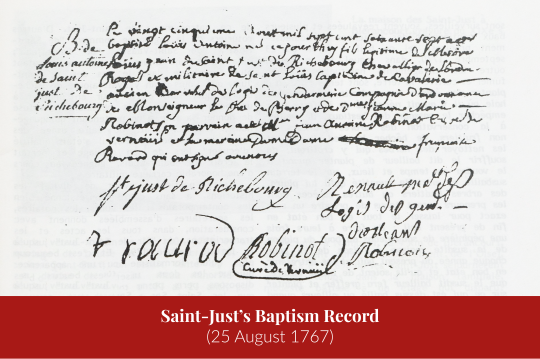
Louis-Antoine Saint-Just: the Beginning
On the day of his birth, 25th of August 1767, Louis-Antoine was baptized by his maternal uncle ( priest Edmond-Léonard Robinot) in the church of Saint-Aré in Decize.
Located between Nevers and Moulins, the small town of Decize then had forges, a plaster factory, coal mines, and warehouses where Burgundy wines were stored. Louis Antoine was probably born in the house of his maternal grandfather, Léonard Robinot, on the Quai du Pont-de-Loire, at the corner of Rue des Pêcheurs. There is a whole family drama about his parents' marriage and his grandfather being against it, but that's a story for another time!
His godparents were his second uncle, Antoine Robinot and Françoise Ravard the wife of a lawyer in the Parlement. He was named Louis after his father and Antoine after his godfather.


The baptismal font is in the archive of the church of Saint-Aré. We can't be sure, but since it's a 18th century font it might have been used for the baptism of baby Saint Just...
33 notes
·
View notes
Text
This site compiled their addresses here though Barère's page is missing (here are some of his addresses), Lindet's address is different than the one give here, and though some mail was sent to Couthon where Robespierre lived, I think he had another address too? (Hérault is also just not listed but the site is centered around Thermidor.)

Copy-pasted below for convenience. I added their birthdates and astrological signs (for those who care about that):
Jean-Baptiste Robert Lindet
Age : Né à Bernay (Eure), 48 ans en thermidor. [2 mai 1746 ♉]
Adresse : 68, rue de la Sourdière.
Métier : Avocat
Fonctions : Député de l’Eure, membre du Comité de salut public du 6 avril 1793 au 7 octobre 1794
Antoine Louis Léon de Saint-Just
Age: Né à Décize, 26 ans en Thermidor an II [25 août 1767 ♍]
Adresse: 3, rue Caumartin, 2ème étage (depuis mars 1794), à la même adresse que Thuillier. Il demeurait auparavant à l’hôtel des États-Unis, rue Gaillon.
Fonction(s): Député de l’Aisne à la Convention depuis le 5 septembre 1792, membre du Comité de Salut Public depuis le 10 juin 1793.
Georges-Auguste Couthon
Age : Né à Orcet, 38 ans en thermidor [22 décembre 1755 ♑]
Adresse : 366, rue Saint Honoré
Profession : Avocat
Fonction(s) : Elu député du Puy-de-Dôme à la Convention le 6 septembre 1792. Membre du Comité de salut public du 10 juin 1793 au 9 Thermidor an II.
André Jeanbon, dit JEAN BON SAINT-ANDRÉ
Age : Né à Montauban, 45 ans en thermidor [25 février 1749 ♓]
Adresse : 7 rue Gaillon
Profession : Marin, puis pasteur
Fonction(s) : Elu député du Lot à la Convention le 5 septembre 1792, membre du Comité de salut public depuis le 10 juin 1793. Fréquemment en mission pour superviser les opérations maritimes, il est absent de Paris le 9-Thermidor.
Pierre-Louis Prieur, dit PRIEUR de la MARNE
Age : Né à Sommesous (Marne), 37 ans en thermidor [1er août 1756 ♌]
Surnom : Appelé Prieur de la Marne (pour le différencier de Prieur de la Côte-d’Or)
Adresse : 11, rue Helvetius
Métier : Avocat
Fonction(s) : Député de la Marne à la Convention depuis le 3 septembre 1792, membre du Comité de salut public du 10 juillet 1793 au 13 thermidor an II (31 juillet 1794), puis à nouveau du 15 vendémiaire au 15 pluviôse an III (6 octobre 1794-3 février 1795).
Absent de Paris au moment du 9-Thermidor.
Maximilien Marie Isidore de Robespierre
Age : Né à Arras, 36 ans en thermidor. [6 mai 1758 ♉]
Adresse : 366 rue Saint-Honoré (numérotation actuelle : 398)
Métier : Avocat
Fonction(s) : Député de Paris à la Convention nationale depuis le 5 septembre 1792 ; membre du Comité de salut public depuis le 27 juillet 1793
Claude-Antoine Prieur-Duvernois, dit PRIEUR de la CÔTE-d'OR
Age : Né à Auxonne, 30 ans en thermidor [22 décembre 1763 ♑]
Surnom : Appelé Prieur de la Côte-d’Or (pour le différencier de Prieur de la Marne)
Adresse : 5, rue Caumartin
Profession : Ingénieur militaire
Fonction(s) : Elu député de la Côte-d’Or à la Convention le 5 septembre 1792. Membre du Comité de salut public du 14 août 1793 au 16 vendémiaire an III (7 octobre 1794).
Lazare Nicolas Marguerite Carnot
Age : Né à Nolay, 41 ans en thermidor. [13 mai 1753 ♉]
Adresse : 2 rue Florentin
Métier : Mathématicien, physicien, militaire
Fonction(s) : Elu député du Pas-de-Calais à la Convention nationale le 5 septembre 1792 ; membre du Comité de salut public depuis le 14 août 1793, il le quitte le 7 octobre 1794 mais y siège à nouveau un mois plus tard, jusqu’au 6 mars 1795.
Jacques-Nicolas Billaud, dit BILLAUD-VARENNE
Age : Né à La Rochelle, 38 ans en Thermidor an II [23 avril 1756 ♉]
Adresse : 40 rue Saint-André-des-Arts
Métier : Avocat
Fonction(s) : Député de Paris à la Convention depuis le 7 septembre 1792, membre du Comité de Salut Public depuis le 5 septembre 1793
Jean-Marie Collot, dit COLLOT d'HERBOIS
Age : Né à Paris, 45 ans en Thermidor an II [19 juin 1749 ♊]
Adresse : 4 rue Favart (3ème étage)
Métier : Acteur, directeur de théâtre
Fonction(s) : Elu député de Paris à la Convention le 6 septembre 1792, membre du Comité de Salut Public depuis le 5 septembre 1793.
#the csp#committee of public safety#comité de salut public#antoine saint just#maximilien robespierre#robert lindet#lazare carnot#claude antoine prieur#jacques nicolas billaud varenne#collot d'herbois#georges couthon#andré jeanbon saint andré#pierre louis prieur#prieur duvernois#prieur de la côte d'or#prieur de la marne#jeanbon saint-andré#bertrand barère
36 notes
·
View notes
Photo
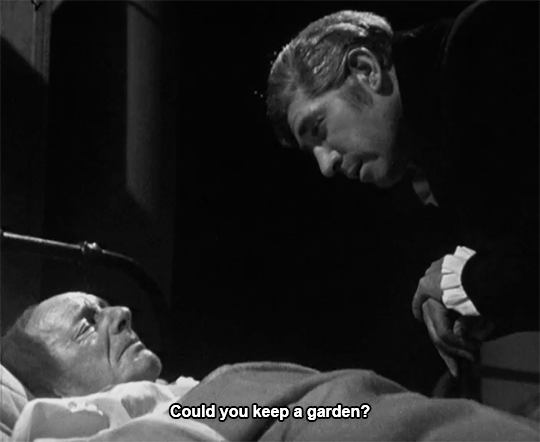
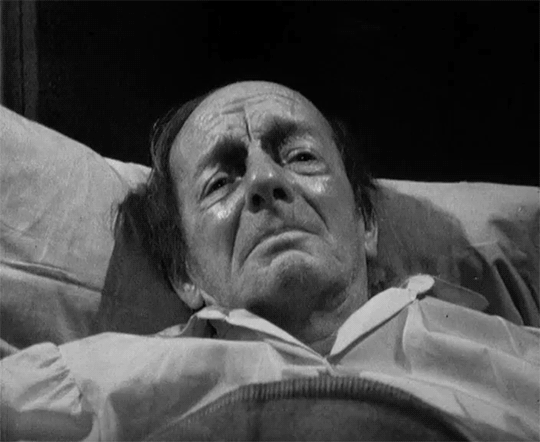
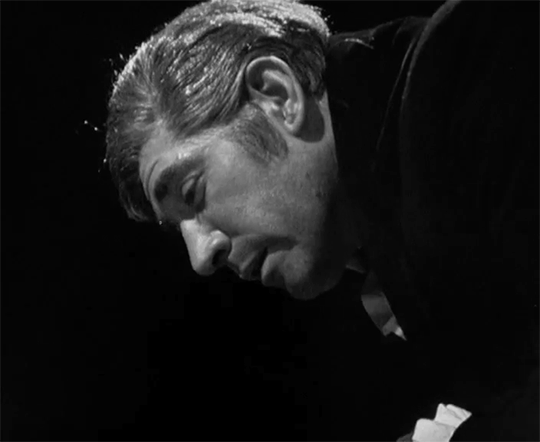
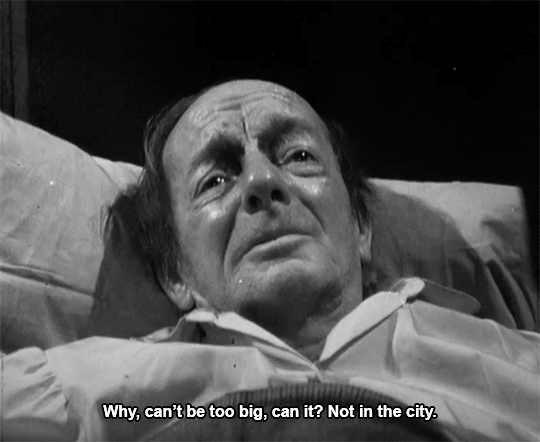
LES MIS LETTERS IN ADAPTATION - Fauchelevent Becomes a Gardener in Paris, LM 1.5.7 (Les Miserables 1967)
M. Madeleine, on the recommendation of the sisters of charity and of his priest, got the good man a place as gardener in a female convent in the Rue Saint-Antoine in Paris.
#Les Mis#Les Mis Letters#Les Miserables#Les Mis 1967#Les Miserables 1967#Jean Valjean#Valjean#Fauchelevent#Les Mis Letters in Adaptation#Frank Finlay#Bert Palmer#convent husbands#lesmisedit#lesmiserablesedit#lesmiserables1967edit#tvedit#miniseriesedit#bbcedit#pureanonedits#I love them actually!!!#I forgot how good the Convent Husbands in this series are.
86 notes
·
View notes
Text

#paris#france#streets#people#darkness#light#café#bar#tabac#pmu#loto#bingo#toto#amigo#rue du faubourg saint antoine#75012
5 notes
·
View notes
Text

An armchair that had once belonged to Soult, sold at an auction. From the catalogue:
The furniture originally comprised at least six armchairs, two bergères, four chairs, a chest of drawers, a bed and a somno. This furniture was commissioned by Marshal Soult, probably around 1805. It is mentioned in 1810 in the bedroom of Monseigneur le Duc among the Marshal's papers, kept at the Archives Nationales, among various repair orders and invoices. [...]
Just to resume: Soult may have ordered that thing in 1805, before leaving for the Austrian campaign. He only returned home for a couple of days on his way from Berlin to Bayonne in late 1808. And in 1810, when he was fighting in Andalusia, the chair is alread listed as in need of repair. Okay, one thing is for sure: Monsieur le Maréchal had not broken it, he had barely had the time to sit down on it yet!
After living Quai Voltaire, the Marshal and his wife moved into the former Hôtel de Talleyrand-Périgord, 69 rue de l'Université, in 1803. This furniture was probably one of the very first orders placed for this new residence. During this period, the Soults frequently commissioned the cabinetmaker Cercous, who worked on rue du Faubourg Saint Antoine until 1826 [...], particularly for modifications to existing furniture and probably for certain purchases. All the furniture can still be found in the Chambre du Nonce [of the Pope] in 1852. The hotel was at this time divided into five furnished rented flats.
16 notes
·
View notes
Text


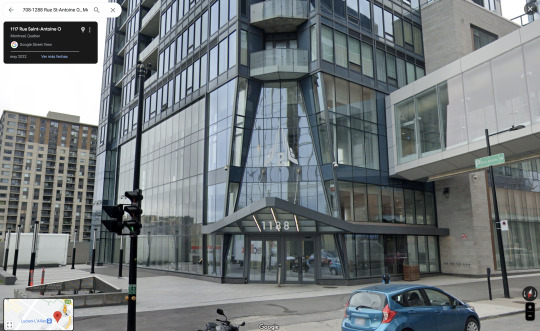
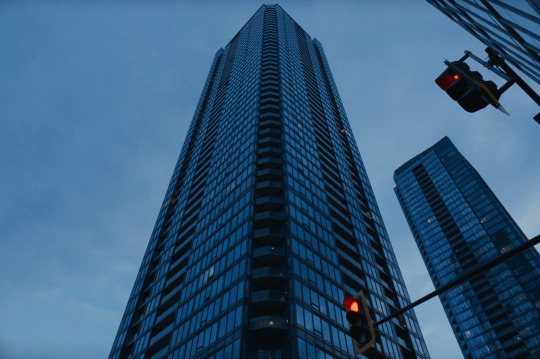
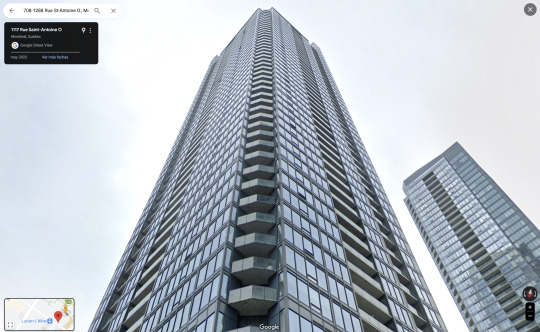
Les chambres rouges / Red Rooms
Pascal Plante. 2023
Apartment
1117 Rue Saint-Antoine O #708, Montréal, QC H3C 0X6, Canada
See in map
See in imdb
#pascal plante#les chambres rouges#red rooms#juliette gariépy#building#ville-marie#montreal#canada#quebec#headphones#red#movie#cinema#film#location#google maps#street view#2023
13 notes
·
View notes